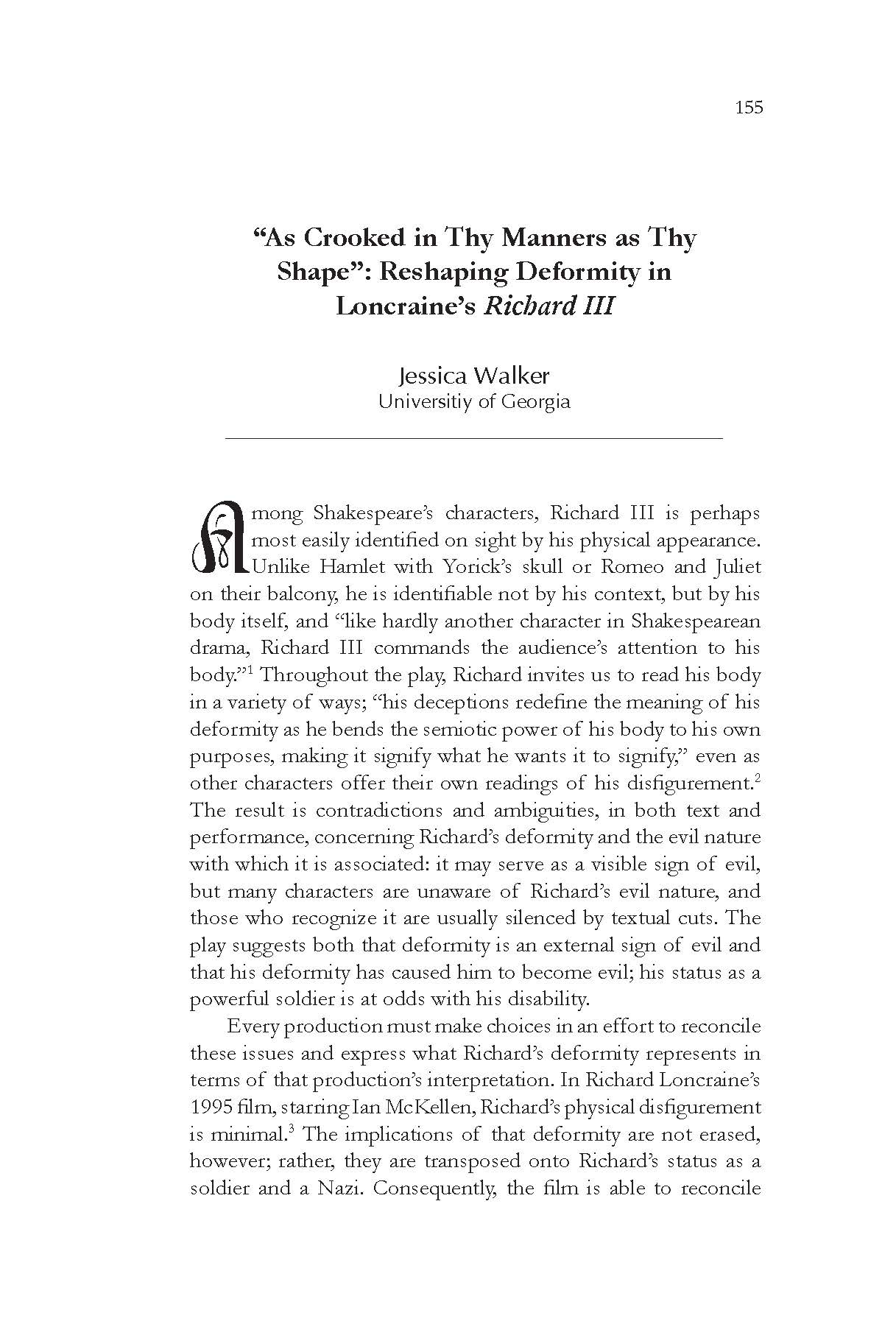“As Crooked in Thy Manners as Thy Shape”: Reshaping Deformity in Loncraine’s Richard III
Main Article Content
Abstract
Among Shakespeare’s characters, Richard III is perhaps most easily identified on sight by his physical appearance. Unlike Hamlet with Yorick’s skull or Romeo and Juliet on their balcony, he is identifiable not by his context, but by his body itself, and “like hardly another character in Shakespearean drama, Richard III commands the audience’s attention to his body.”1 Throughout the play, Richard invites us to read his body in a variety of ways; “his deceptions redefine the meaning of his deformity as he bends the semiotic power of his body to his own purposes, making it signify what he wants it to signify,” even as other characters offer their own readings of his disfigurement.2 The result is contradictions and ambiguities, in both text and performance, concerning Richard’s deformity and the evil nature with which it is associated: it may serve as a visible sign of evil, but many characters are unaware of Richard’s evil nature, and those who recognize it are usually silenced by textual cuts. The play suggests both that deformity is an external sign of evil and that his deformity has caused him to become evil; his status as a powerful soldier is at odds with his disability.
